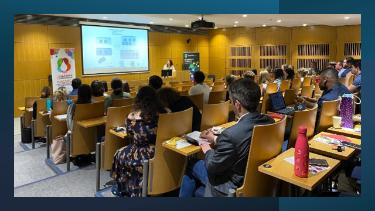Overcoming resistance of RAS-mutant cells to RAF inhibitors by combining structurally different inhibitors can open new strides in targeted therapy.
Malignant melanoma is a skin cancer primarily caused by UV exposure. Due to its tendency to spread rapidly and its resistance to drugs, melanomas rank among the deadliest cancers. Alarmingly, Ireland’s rate of melanoma incidence is steadily increasing which resulted in the highest mortality rate for men across all European countries.
While targeted treatments exist for a subgroup of melanomas caused by mutations in the BRAF gene in the form of drugs directed against mutated BRAF, no direct targeted therapies are currently in place to treat melanomas caused by mutations in the NRAS gene. These mutations are responsible for one third of the melanomas and consequently, NRAS mutated melanoma remain extremely difficult to treat.
Current clinically used RAF inhibitors are ineffective in RAS-mutant tumours because they enhance homo- and heterodimerization of RAF kinases, leading to paradoxical activation of oncogenic signalling. Overcoming enhanced RAF dimerization and the resulting resistance is a challenge for drug design. Combining multiple inhibitors could be more effective, but it is unclear how the best combinations can be chosen.
Our international team used a combined experimental and computational approach to solve this puzzle. Our next-generation computer model of the underlying signalling network not only integrates the known protein-protein interaction and network architecture, but also includes the thermodynamics and kinetics of drug- protein interactions, structural elements of the targets, post-translational modifications of the signalling molecules involved, and the cell mutational status. Formal detailed description of the model (using so-called rule-based modelling approach) consists of about 25,000 chemical reactions. This computer model was used to predict suitable combinations of distinct RAF inhibitors with the aim to target malignant melanoma more efficiently. Computer predictions were then successfully validated in cell line models representing different malignant melanoma subclasses. Our results suggest which combinations of RAF inhibitors are suitable for diverse genetic backgrounds, but, most importantly, demonstrate, that specific RAF inhibitor combinations can be applied to overcome oncogenic RAS signalling in malignant melanoma. Moreover, since our model predicts optimal RAF inhibitor combinations mainly based on mutational profile, it can generate predictions for other types of RAS- and RAF-mutant cancers as well, such as colorectal cancer, pancreatic cancer and others.
Graphical abstract:
To overcome oncogenic RAS-to-ERK signalling, suitable combinations of conformation‑selective RAF inhibitors are predicted by a structure-based model that integrates thermodynamic, kinetic, structural, and cell mutation data. Predictions are validated in vitro using signalling, proliferation, and colony-formation assays. Generally, our data suggest that if a kinase dimerizes for full activation, two inhibitors targeting this kinase in different conformations will likely synergize for target inhibition.
It is important to note that this does not mean doctors will start treating malignant melanoma with these drugs combinations tomorrow, but it’s a promising step in the right direction. As usual, there is still a lot of validation work to translate these results from discovery to treatment.
At Systems Biology Ireland a large number of researchers work on the mechanisms that cause malignant melanoma and try to design novel therapies to combat this disease.
Research team:
This large collaborative study was led by a number of research groups at Systems Biology Ireland including Prof. Boris Kholodenko (Dr. Oleksii S. Rukhlenko, Dr. Fahimeh Khorsand), Prof. Walter Kolch (Dr. Aleksandar Krstic, Dr. Nora Rauch), Dr. Jens Rauch (Dr. Cheree Fitzgibbon), and Dr. David Matallanas.
International collaborators include Dr. Keesha Erickson and Prof. William Hlavacek at Los Alamos National Laboratory, Prof. Richard Posner at Northern Arizona University, Dr. Silvia Gómez-Cocaand Prof. Edina Rosta at King’s College London, as well as Dr. Jan Rozanc and Prof. Leonidas Alexopoulos at ProtATonce Ltd (Athens, Greece).
Publication reference:
O. S. Rukhlenko, F. Khorsand, A. Krstic, J. Rozanc, L. G. Alexopoulos, N. Rauch, K. E. Erickson, W. S. Hlavacek, R. G. Posner, S. Gómez-Coca, E. Rosta, C. Fitzgibbon, D. Matallanas, J. Rauch, W. Kolch, and B. N. Kholodenko, “Dissecting RAF Inhibitor Resistance by Structure-based Modeling Reveals Ways to Overcome Oncogenic RAS Signaling,” Cell Systems, Jul. 2018. You can read the full paper here:https://www.cell.com/cell-systems/fulltext/S2405-4712(18)30242-4
You can also read write up in Science Trends:


